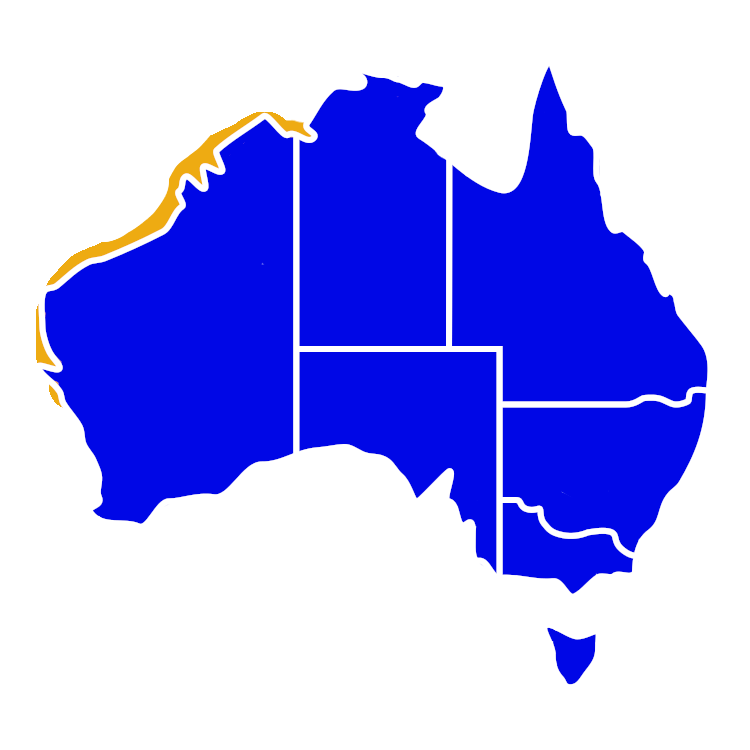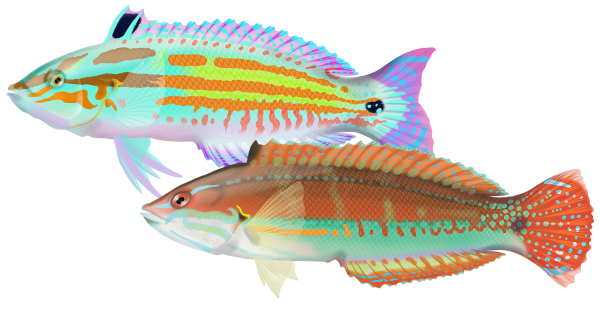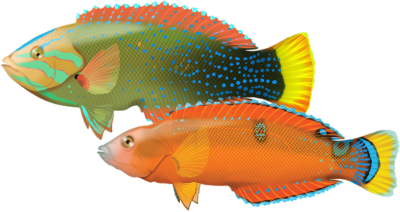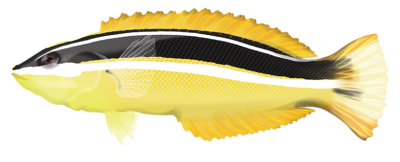Quick Facts
Distribution

Interesting Info
- The Spot-tail Wrasse is found along the northern and western coasts of Australia.
- They have a distinctive appearance, with a bright red body, a blue-green head, and a spotted tail. The spots on their tail are more pronounced in juveniles and females.
- They have a varied diet that includes crustaceans, small fish, and molluscs.
- Spot-tail Wrasse have a unique feeding behaviour where they use their pectoral fins to prop themselves up while they pick small prey off the reef.
- They are not territorial and are generally peaceful with other fish in the reef community.
- The Spot-tail Wrasse is a protogynous hermaphrodite, meaning they start life as females and can later change into males. This transition usually occurs when the male population is low.
- Spot-tail Wrasse are active during the day and rest at night, hiding in crevices and among coral.
- They are known to spawn during the warmer months of the year, typically from October to April. Males court females by performing a “zigzag” dance and displaying their fins to attract a female. Once a pair has formed, they swim up into the water column and release their eggs and sperm simultaneously, creating a cloud of fertilised eggs.
- Estimated lifespan is up to 20 years.
Species Interaction
Recreational Fishing, Aquarium, Snorkeling & Diving
The Spottail Wrasse can be a fascinating species to observe for snorkelers and divers. They are active swimmers and are often seen swimming in small groups around coral reefs and rocky areas, searching for food. Their bright blue-green and red body and distinctive spot at the base of their tail make them easy to spot underwater. They are often caught as bycatch with anglers and normally released. They can be a good addition to larger established aquariums but do grow to a larger size so need space.
Scientific Classification
Kingdom: Animalia
Phylum: Chordata
Class: Actinopterygii
Order: Perciformes
Family: Labridae
Genus: Coris
Species: Coris Caudimacula
Conservation Status
The Spottail Wrasse is not considered a threatened species in Australia, and is listed as of ‘Least Concern’ by the International Union for Conservation of Nature (IUCN).
Fish Taste Quality
Spot-tail wrasse are an edible fish but typically released as they are considered bycatch. They have firm, white flesh that is said to be mild in taste.
Taste Rating: 2/5
How to catch
Spot-tail Wrasse
Catch Difficulty: Easy
Tackle: Running Sinker Rig
Bait: Crab, Fresh cut flesh baits, Lures, Prawns, Squid, Worms
Technique: Keep bait on the bottom, Keep bait close to the reef/structure
Popularity: Not targeted - Bycatch
Spot-tail Wrasse
As Aquarium Fish
Care Level: Moderate
Temperament: Peaceful
Diet: Carnivore
Reef Compatible: Yes
Minimum Tank Size: 120 gallons
Recreational Viewing
- Snorkeling & Scuba
Finding: Easy
Temperament: Peaceful
Location: Inner Reef, Outer Reef, Lagoon
Danger: None





